- Home
- Peter Ackroyd
London Under Page 7
London Under Read online
Page 7
In more recent times William Lyttle has built a system of tunnels, some of them 60 feet in length, beneath his property in Hackney. He had been at work upon this underground project for forty years, completely unknown and unobserved, until residents’ complaints of inexplicable earth movements led to its discovery in 2003; the power of the adjacent street was one day terminated when he damaged a 450-volt cable. The tunnels and caverns radiate in all directions from his house in a subterranean web, but the meaning and purpose of the enterprise have never been discovered. “Tunnelling,” he said to journalists, “is something that should be talked about without panicking.” But that is precisely the response to someone who loves to inhabit the underworld—panic at the unknown. His nickname itself, “the mole man,” indicates the deep fear of transformation. This was the anxiety that created the Minotaur, half man and half bull, with his own kingdom beneath the earth.
It was reported in the press that Mr. Lyttle’s face “lit up” when discussing underground chambers and secret tunnels, but it is hard to understand the origin of the fascination. It may be the comfort of being hidden, as in the case of the fifth Duke of Portland, and of somehow being safe from the depredations of the world. It may also represent a fantasy of power, whereby material or even spiritual strength is increased by being unknown and unseen. Before his retirement Mr. Lyttle was an electrical engineer, harbouring the secrets of invisible power. To entertain the fantasy of the tunnel may represent the fear of being seen; and the power of being unseen.
When asked if he was an inventor Mr. Lyttle replied that “inventing things that don’t work is a brilliant thing.” This is itself a brilliant answer, capturing the sheer facticity of much human activity. It is not purposeless. It has all the fascination of making art. The obsession, the act of digging out the earth, is enough. He went on to say that “there is no secret,” thus helping to demolish the fantasy that the underworld is somehow a secret place, a place of “secret treasure.” He was simply creating more space, itself an instinctive human activity. He was creating a burrow.
One of the greatest of the mole men is Marc Isambard Brunel, whose dream of tunnelling beneath the Thames was eventually achieved at the expense of much cost and suffering. There had been two previous attempts to slay or undermine the deity of the river. In 1798 an engineer proposed to excavate a tunnel between Gravesend and Tilbury with “a grand uninterrupted line of communication”; but the workers soon discovered quicksand, and the enterprise was abandoned. Four years later two Cornish engineers, accustomed to finding treasure under the ground, began to carve a tunnel out of the Thames clay between Rotherhithe and Limehouse; but their miners also found quicksand. They persevered, and the tunnel came within 120 feet of the shore before the river burst through.
The secret of Brunel’s success lay in the humble mollusc, the Teredo naturalis or ship-worm. It is not clear whether he observed it in a prison cell, where he had been briefly consigned for debt, or in the naval yards at Chatham. Yet he did understand its life force. It eats the timber of a ship, instinctively creating more space like the mole man of Hackney, and then passes the wood through its body; its excreta are then used to bolster the fabric of the tunnel it has created. Brunel realised that the same process could be used on a much grander scale, with the invention of a massive Teredo naturalis made out of iron. As the engine advanced, the workers, in thirty-four separate “cells” at the front, would carve out 4½ inches of clay at a time; a team of men in the rear would then line the newly uncovered piece of tunnel with brick and stone.
There was only one precedent. In 2180 BC the Babylonians built a tunnel beneath the Euphrates to unite the royal palace of Babylon with the temple to Jupiter Belos; after an interval of 4,000 years, the great work was about to begin again.
The chosen route beneath the river united Rotherhithe on the south bank with Wapping on the north. The work began on 2 March 1825 with the building of the first shaft to link the surface with the mouth of the tunnel. It was the shaft that claimed the first fatality when, four months later, a workman fell down through it and was killed. He was the first propitiatory sacrifice. The shaft descended gradually, through the force of its own weight, and nine months after its inception it reached the required depth of 75 feet beneath the surface of the river. This in itself was an extraordinary achievement of engineering. Work on the tunnel itself could now begin. The men were divided into two shifts, working for eight hours at a time and then resting for eight hours before beginning once more. They drank beer laced with gin, and they slept in what one miner called “a feverish doze.”
The river flooded the workings at the beginning of 1826, but the damp and darkness provoked symptoms that were variously described as “ague” and “dysentery”; one man succumbed to delirium, and died. This was the terror of the underworld. The miners truly believed that they might be buried alive. In the first days and weeks any unfamiliar sound echoing through the depths would send them running to the exit shaft. The temperature rose and fell alarmingly, sometimes swinging 30° at a time. One mistake, one faulty brick, might bring down the whole fabric. Explosions of gas occurred within the tunnel, also, so that the labourers lived in fear of fire as well as of water. The engineer in charge of the project collapsed from the strain of the undertaking. He was replaced by Marc Brunel’s son, Isambard Kingdom Brunel.
Building the Tower subway, 1860s (illustration credit Ill.24)
The younger Brunel took over the work only to discover that the tunnel was coming close to the bed of the Thames. That part of the river was then packed with bags of clay, but they were not enough. In the spring of 1827 the Thames broke through once more; one workman died in the flood, and another died of fever and dysentery after the event. Marc Brunel was afflicted by the first of several strokes. The mythic horrors of the underworld had taken a large toll, and the elder Brunel himself considered that his men had been “sacrificed” in their work of defying the natural world; they had entered a part of the underworld that had never before been visited. There were sometimes outbreaks of panic among the workers that had no discernible cause. On one occasion screams of “Help!” were heard coming from the tunnel; a miner had fallen asleep and had dreamed of flooding.
At the beginning of 1828 the river once more inundated the workings; there were cries of “The Thames is in! The Thames is in!” It was said that the ground above the tunnel seemed to come alive. Two men died in the deluge, but Isambard Kingdom Brunel was swept by the force of the water up the shaft to the surface. At the time of the calamity a parson from Rotherhithe deemed it to be “a just judgment on the presumptuous aspirations of mortal men.” He might have repeated the words of God to Adam: “Cursed is the ground because of you.” It was wrong to go beneath the earth, closer to the infernal regions. The project was discontinued, and was not revived until the advent of government money in 1835.
On their return to work, at the beginning of 1836, the miners were confronted by another horror of the underworld. They were digging their way through old earth that was heavily impregnated with foul gases, described by one of their number as “vomiting flames of fire which burnt with a roaring noise.” Bright flame would burst from the face of the excavation.
Marc Brunel’s diary is a litany of sorrowful mysteries. On 16 May 1838 he recorded the incidence of “inflammable gas. Men complain very much.” Ten days later he wrote that “Heywood [a miner] died this morning.… Two more on the sick list. Page is evidently sinking very fast …” The metaphor of “sinking” is interesting; Page was going down even further than the others. Brunel also noted that “the air is excessively offensive. It affects the eyes. I feel much debility after having been some time below.… All complain of pain in the eyes.” Some of the workmen in fact suffered from blindness, temporary or permanent, that became known as the “tunnel disease.” Epidemics of diarrhoea added their own horror to the polluted air. On 10 August 1838, the foreman of the works was escorted to a lunatic asylum where he could not be left unat
tended.
“It is truly distressing,” Marc Brunel wrote to a friend, “to see those men of ours who are disabled, not one leading man left of the first shift. Williams just gone off, complaining of fever, depression of spirits attended with acute pains in the head. The next to him, after two relapses, is, I have no doubt, completely gone, an excellent man. The evil is increasing …” It was the evil of the subterranean depths. Eleven deaths occurred in the last two years of the enterprise. This was truly an unknown world, filled with peril. Nobody really understood what was happening. There was no science of underground engineering. Brunel had merely copied the activity of a mollusc.
When Fanny Kemble, the English actress, visited the work in progress she was much struck by the image of the miners, “all begrimed, with their brawny arms and legs bare, some standing in black water up to their knees, others laboriously shovelling the black earth in their cages (while they sturdily sang at their task) with the red, murky light of links [flaming torches] and lanterns flashing and flickering about them.” They have become the creatures of the underworld, dwarves or devils, and Fanny Kemble instinctively draws the landscape of Hades.
Yet the drive for mastery of the lower world was maintained. The mid-nineteenth century has been described as the age of heroic materialism, and the Duke of Wellington described Brunel’s enterprise as “the greatest work of art ever contemplated.” The first subaqueous tunnel of the modern world was completed in the spring of 1840, and opened by Queen Victoria at the beginning of 1843. It was, for a time, the wonder of the earth. But the triumph was not what it seemed. The only entrance to, and exit from, the tunnel was by means of the vertical shafts on either bank. No room, or opportunity, existed for the vehicle traffic that had been envisaged. Many people visited the tunnel in the early months, eager for the sensation of walking beneath the Thames, but the popularity of the tunnel did not last.
The Banquet in the Thames Tunnel, by George Jones, 1827. This was organised by Marc Brunel’s son, Isambard Kingdom Brunel, to persuade people the tunnel was safe after the disastrous floods earlier in the year. (illustration credit Ill.25)
The Entrance to the Thames Tunnel, by B. Dixie, 1836 (illustration credit Ill.26)
It was disconcerting; it was even frightening. It was pervaded by an air of hopelessness and dreariness, with the presence of the Thames above the brick arches as an imminent threat. “The very walls were in a cold sweat,” The Times reported upon the opening day, with the first visitors also afflicted by “a lurking, chilling fear.” Nathaniel Hawthorne, who was then the American consul in Liverpool, recorded how he had descended through “a wearisome succession of staircases” until he beheld “the vista of an arched corridor that extends into everlasting night.” It was “gloomier than a street of upper London” and seemed to him to have the fearful quality of a prison. Like any London prison it soon harboured its own particular inmates, with small stalls or shops set up in the alcoves of the tunnel by women who seldom or never saw any daylight.
But the Thames Tunnel also had other visitors. It was popularly supposed to be the haunt of thieves and prostitutes, taking over the unsavoury reputation of the Fleet Ditch; the underworld was once more calling to its proper denizens. It became known as “the Hades Hotel.” It was an embarrassment, a shadow beneath the Thames, and in 1869 it was taken over by the East London Railway. In that capacity it has remained as an underground tunnel for the “tube” ever since. The stairs of the original shaft were, until very recent times, in constant use by passengers.
The other tunnels under the Thames, confronting the primal fear of the river and of the darkness, have never lost their overwhelming sense of gloom. In 1869 a tunnel was built between Tower Hill in the north and Tooley Street in the south; it was made of cast iron rather than of brick, and was designed for the use of carriages drawn by cables from either end. Tower Bridge had not at this date been erected. The tunnel was as unsuccessful as its predecessor. If for some reason a carriage stopped in the middle of the tunnel, the passengers, in the sudden silence, could distinctly hear the sound of paddle steamers overhead. The river was too close. It was then turned into a pedestrian tunnel before being overtaken by the building of Tower Bridge. It has been employed ever since as a “ghost tunnel,” carrying the myriad cables and pipes that the city needs. If you enter it, you can hear the sound of the water churning overhead. It has the reputation of being one of the loneliest spots in all of London.
The same sensation can be experienced in the Greenwich Foot Tunnel, completed in 1902. It makes its way beneath the ground between Greenwich and the Isle of Dogs, and has remained a gloomy and intimidating place for more than a century. It is impossible not to feel the force of the water, some 53 feet above the pedestrian’s head at high tide. The tunnel is lined with white tiles, and is always cool; it has an air of dankness. At a length of a quarter of a mile it is an unnerving space, with the constant fear of the tiles coming apart to make way for the deluge.
The tunnels beneath the river are filled with intimations of strangeness. The road tunnel known as the Limehouse Link, running beneath the ground from Tower Bridge to the Isle of Dogs, was opened in 1993. Its eastern and western portals bear two sculptures. One is entitled Restless Dream and the other is called On Strange and Distant Lands. A drive through the Blackwall Road Tunnel has variously been described as disquieting and intimidating. That is perhaps because of its proximity to the river; at some points it is only 5 feet beneath the water. The latest venture beneath the ground, the Docklands Light Railway’s tunnel beneath the Thames between Island Garden and Cutty Sark, should also be experienced. Once the travellers are beneath the river they seem to be plunged into a deeper darkness, at once more intimate and more threatening.
More than twenty tunnels now burrow beneath the Thames, a larger number than in any other comparable city in the world; some of them are dry and disused, but their subterranean presence will endure as long as London itself.
The system itself was built before the unification of Italy and before the creation of Germany. Its first travellers wore top hats and frock-coats; there are early photographs of horse-drawn hansom cabs parked outside the underground stations. Oscar Wilde was a commuter on these subterranean trains, travelling from Sloane Square station to his office on Woman’s World at the bottom of Ludgate Hill. Charles Dickens and Charles Darwin could both have used the Underground. The coffins of William Gladstone and Dr. Barnardo were both transported beneath the earth in funereal underground trains. Jack the Ripper could have travelled on the Underground to Whitechapel; the station was served by the East London Railway. In the middle of the nineteenth century it was an astonishing thing. At the beginning of the twenty-first century, with the elaborate vistas of Canary Wharf or North Greenwich, it is still astonishing. It contains and commemorates many epochs.
The first begetter of the Underground, Charles Pearson, advanced his proposals in the 1830s; by this period the main thoroughfares of London were blocked by an assortment of horse-drawn omnibuses, drays, phaetons and hackney carriages that carried hundreds of thousands of people into the city. As for the pedestrians, there was no counting them. Pearson considered that tunnels under London were the only solution to the congestion and delay above the ground, and suggested that underground routes should connect King’s Cross with Farringdon Street. But so fanciful a conception invited only derision. A correspondent in The Times believed that a scheme for journeys beneath the surface was equivalent to absurd notions of flying machines and tunnels under the Channel. Punch and other magazines published cartoons in which the notion of an underground railway was ridiculed. “We understand,” Punch wrote in 1846, “that a survey has already been made and that many of the inhabitants along the line have expressed their readiness to place their coal cellars at the disposal of the company.” It would turn into “a Cheapside arcade for the penny hawkers” just as the Thames Tunnel had become.
More serious objections were raised. It would become a haven for F
enians and other terrorists, who would explode barrels of dynamite and destroy parts of the city. Several such explosions did indeed take place. The first of them was carried out by the “Dynamiters” in 1881, when a charge of nitro-glycerine blew up in the tunnel of the District Line between Charing Cross and Westminster stations. There have been other such events ever since, most notably on the morning of 7 July 2005 when within fifty seconds three bombs exploded on three underground trains. The perpetrators were young Muslim men, but the motives for creating subterranean terror belong to no one faith. The fear of the underground is still very real. It is associated with the terror of an inferno beneath the surface, congruent to hell itself. Many escalator fires have started, most notably that in King’s Cross in 1987 where twenty-seven people were killed. It was argued by some at the time that “fires were a part of the nature of the oldest, most extensive, underground railway in the world.”
Pearson, a practical as well as an ingenious man, persisted in the face of objection and complaint. A parliamentary commission was established in 1846 to survey the state of the city’s transport. Joseph Paxton submitted a scheme for an immense glass way circling above the streets and houses of London; the glass arcades, at a height of 108 feet, would provide lines for trains, and promenades for the people. It was a magnificent conception, but it was impractical. The only realistic scheme lay beneath the earth. It was granted to Pearson’s Metropolitan Railway Company. Concerns were raised about ventilation within the tunnels but Isambard Kingdom Brunel, called as a witness, declared that the proposed journeys were very short. “You need not take your dinner with you,” he said, “or corn for your horse.”

 The Clerkenwell Tales
The Clerkenwell Tales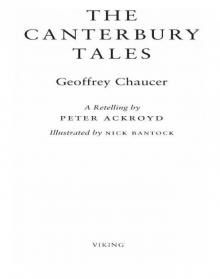 The Canterbury Tales
The Canterbury Tales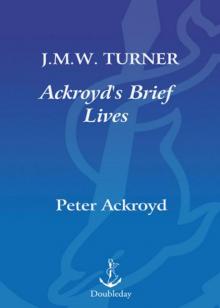 J. M. W. Turner
J. M. W. Turner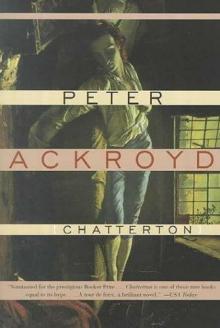 Chatterton
Chatterton The Canterbury Tales – A Retelling
The Canterbury Tales – A Retelling Alfred Hitchcock
Alfred Hitchcock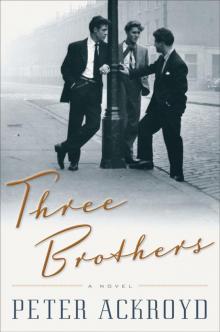 Three Brothers
Three Brothers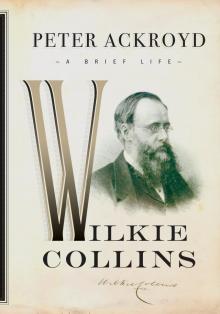 Wilkie Collins
Wilkie Collins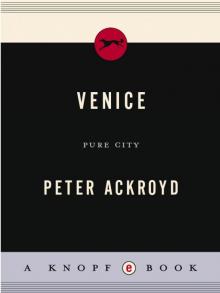 Venice
Venice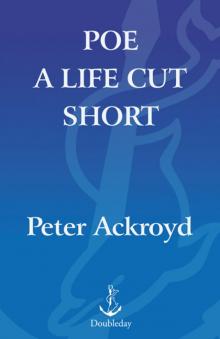 Poe
Poe The Lambs of London
The Lambs of London London
London Queer City
Queer City Revolution, a History of England, Volume 4
Revolution, a History of England, Volume 4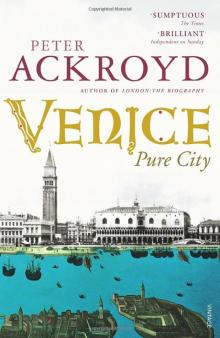 Venice: Pure City
Venice: Pure City Foundation
Foundation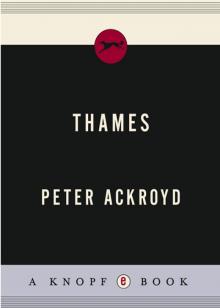 Thames
Thames The Plato Papers
The Plato Papers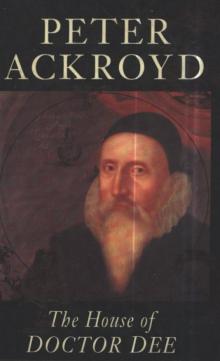 The house of Doctor Dee
The house of Doctor Dee Rebellion: The History of England from James I to the Glorious Revolution
Rebellion: The History of England from James I to the Glorious Revolution Albion: The Origins of the English Imagination
Albion: The Origins of the English Imagination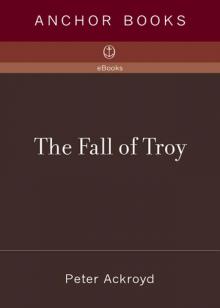 The Fall of Troy
The Fall of Troy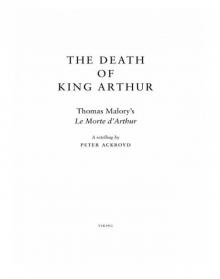 The Death of King Arthur
The Death of King Arthur The Trial of Elizabeth Cree
The Trial of Elizabeth Cree London: The Biography
London: The Biography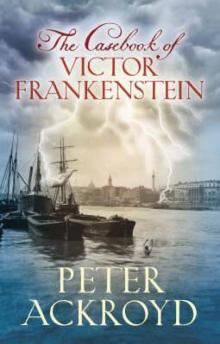 The Casebook of Victor Frankenstein
The Casebook of Victor Frankenstein Hawksmoor
Hawksmoor Charlie Chaplin
Charlie Chaplin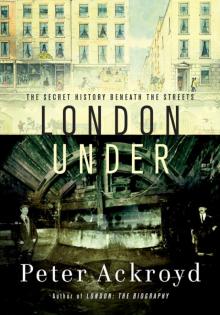 London Under
London Under